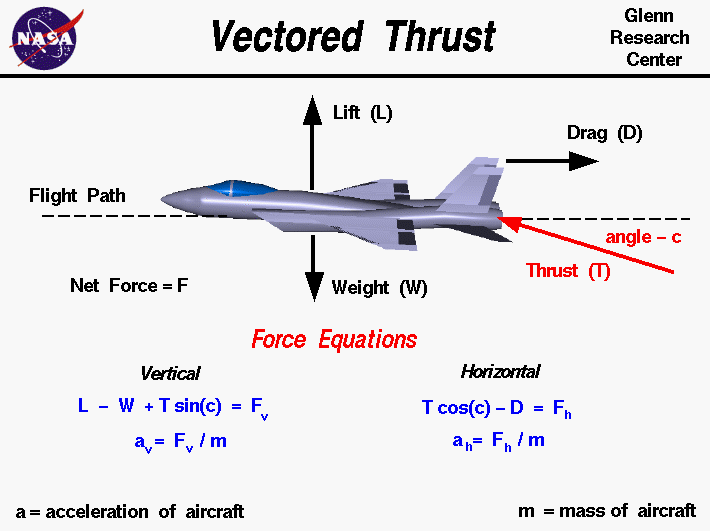MiG-29
Banned Idiot
Helicopter is not a jet fighter. Repeating "vectors" over and over isn't going to make a jet fighter behaves like a helicopter. Thrust vectoring produces moment and doesn't add to lift, as your own sources have shown. Physics are physics.
Momentum is a vector quantity. As discussed in an earlier unit, a vector quantity is a quantity that is fully described by both magnitude and direction
So go and read more
Torque and angular momentum are actually vector
quantities. Angular momentum is conserved in both magnitude and direction in the
absence of external torque
There are four forces that act on an aircraft in flight: lift, weight, thrust, and drag. The motion of the aircraft through the air depends on the relative size of the various forces and the orientation of the aircraft. For an aircraft in cruise, the four forces are balanced, and the aircraft moves at a constant velocity and altitude. Some modern fighter aircraft can change the angle of the thrust by using a movable nozzle. The ability to change the angle of the thrust is called thrust vectoring, or vectored thrust.
Forces are vector quantities having a magnitude and a direction. The resulting acceleration, velocity and displacement of the aircraft are also vector quantities which can be determined by Newton's second law of motion and the rules of vector algebra. There are two component equations for the force on an aircraft. One equation gives the the net vertical force Fv, and the other gives the net horizontal force Fh. If we denote the thrust by the symbol T, the lift by L, the drag by D, and the weight by W, the usual force equations for an aircraft in level flight are:
With new mechanical systems it is possible to deflect the engine exhaust from the nozzle and cant the thrust vector at an angle. We will call this angle c. The resulting force equations are shown on the slide:
Vertical: L - W + T sin(c) = Fv
Horizontal: T cos(c) - D = Fh

Last edited:
